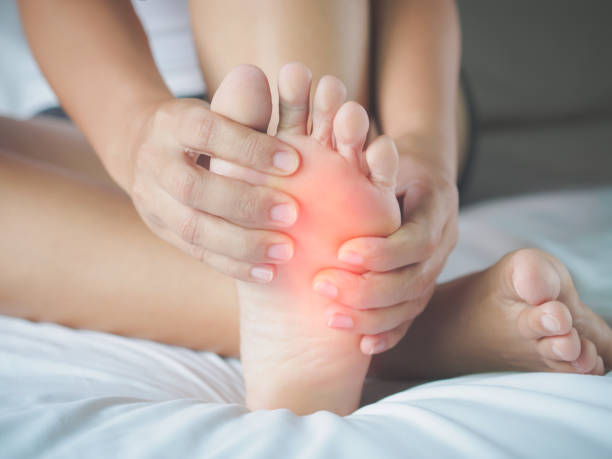What Podiatrists and Physiotherapists Can Treat and How They Help
If your foot pain is related to structural issues, podiatrists can conduct thorough examinations, order diagnostic tests and supply medical interventions such as orthotics. They also provide a range of personalized exercise regimens and manual techniques.
Your Optimise Health physio are experts at treating a wide range of health conditions and movement disorders. Their management strategies include manual therapy, such as massage and joint mobilization, exercise/movement therapy, and advice on lifestyle modification.

1. Pain Management
Pain management is an important part of podiatry. Pain can interfere with a patient’s daily life and make it difficult to sleep and concentrate. Pain can also affect mood.
Podiatrists or may prescribe medications to reduce pain, swelling and inflammation. They can also prescribe special shoes or inserts to correct foot abnormalities like bunions, hammertoes and flat feet. They can also treat gout, a type of arthritis that causes pain in the joints of the big toe. They recommended wart removal Toowoomba to diagnose and treat plantar warts, which are small rough growths that appear on the bottom of your feet and can be difficult to remove with over-the-counter treatments.
A podiatrist in Toowoomba can help patients with a condition called neuromas, which is a painful condition caused by the thickening and swelling of a nerve in your foot that leads to your toes. Usually, this happens when you wear tight or high-heeled shoes for long periods of time. They can also advise patients with a condition called arthritic ball of foot pain which often affects people who play sports that require rapid changes in direction, such as tennis or football or who are overweight. Treatment includes a combination of pain medications, shoe advice and exercises to strengthen the muscles in the foot and ankle.
2. Personalized Exercise Programs
Podiatrists are able to assess the structure and function of your feet and lower legs. They can then provide solutions such as orthotics that can improve the way your feet and lower legs work. They can also prescribe a personalized exercise program to help with pain, mobility and function.
Physiotherapists treat a wide range of health conditions and movement disorders, so they can often inform and carry out podiatrists treatment plans. They may even be able to do things like provide additional treatments such as dry needling or manual therapy.
Research has shown that combining podiatric and physical therapy treatment can lead to better outcomes. In one study, patients receiving interdisciplinary care with podiatry and physical therapy experienced significantly better outcomes than those who only received podiatric care.

3. Gait Analysis
Gait analysis is more than just watching as a patient walks; it’s about evaluating movement patterns holistically. Using gait and motion analysis, a physical therapist can dig deeper into the movements of the body and how each part works together to determine the root cause of injuries.
Improper gait can add strain to multiple joints, muscles and bones over time. Gait analysis can show a physical therapist which areas of the body are over-stressed, which muscles and joints are not firing properly, and how much force is being put through the joints and feet.
Identifying these imbalances and correcting them will help to reduce the amount of overuse on your knees, hips and back. This allows the larger muscles (hamstrings, quads and glutes) to do more of the work rather than smaller stabilizing muscles, reducing the likelihood of long-term niggles and injury. The results of a gait analysis also helps the physical therapist create a custom treatment plan that addresses the specific injuries you have. This is a critical step in rehabilitation that will lead to faster recovery times.
4. Orthotics
Your feet do a lot of work, and they’re made up of bones, tendons, and ligaments that all need to be healthy and working together perfectly. However, injuries, arthritis, or other conditions can leave them in a compromised state that makes movement painful.
One way to alleviate pain and help your foot heal is by wearing orthotics. These are custom inserts that go into shoes to provide support and cushioning. They can also correct gait problems and relieve heel, foot, or ankle pain.
Podiatrists prescribe orthotics to treat various foot and ankle issues, including flat feet and high arches, arthritic joints, sports injuries, and congenital problems. They can also alleviate back, hip, and knee pain.
A podiatrist will take a mold of your foot to create a customized orthotic for you. They may also recommend shoes that are made for orthotics. Fortunately, orthotic-friendly shoe design has come a long way so you can get the support you need without having to wear ugly or clunky looking shoes.
5. Physical Therapy
Podiatrists and physiotherapists both treat injuries and diseases that affect the foot, ankle and lower leg. But a podiatrist specializes in the foot, while an orthopedist (also called an orthopaedist) treats the entire musculoskeletal system of bones, muscles and joints.
For instance, diabetic patients have to see a podiatrist for long-term care of their feet because diabetes can cause serious issues in the foot. Nerve damage from diabetes prevents the foot from feeling pain, so people continue to put pressure on injured areas, causing ulcers and infections. These untreated foot infections can move through the bloodstream, affecting other parts of the body.
A podiatrist can prescribe medication for inflammation and other symptoms related to diabetes. They can also help you find ways to manage your condition, including by suggesting specific shoes, orthotics or physical therapy. They can also remove ingrown toenails, corns and calluses and use cryotherapy equipment – liquid nitrogen – to get rid of plantar warts. They can also treat neuromas, which cause burning and tingling in the feet that usually happens in women who wear narrow, high-heeled shoes.
